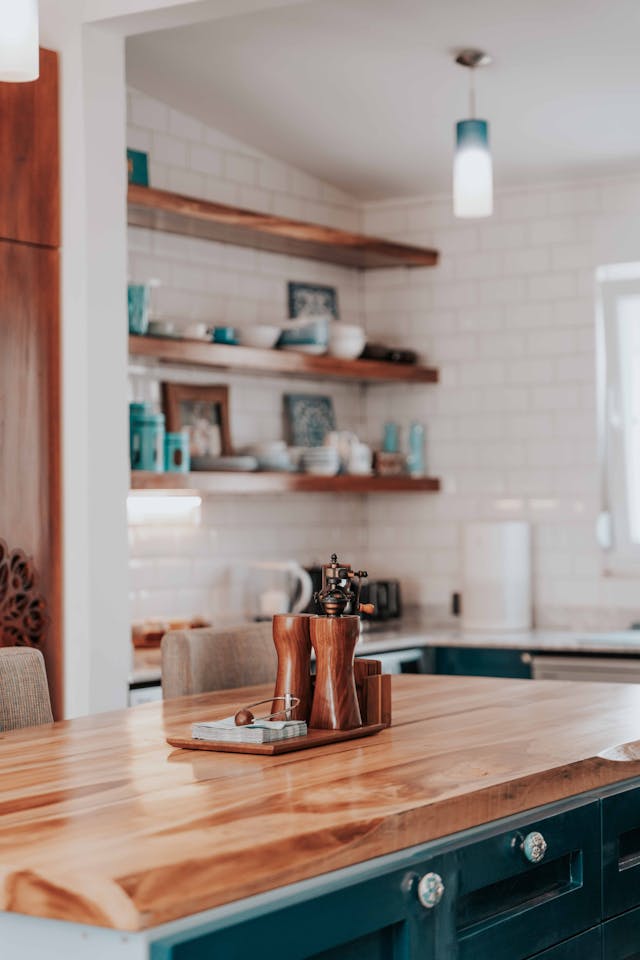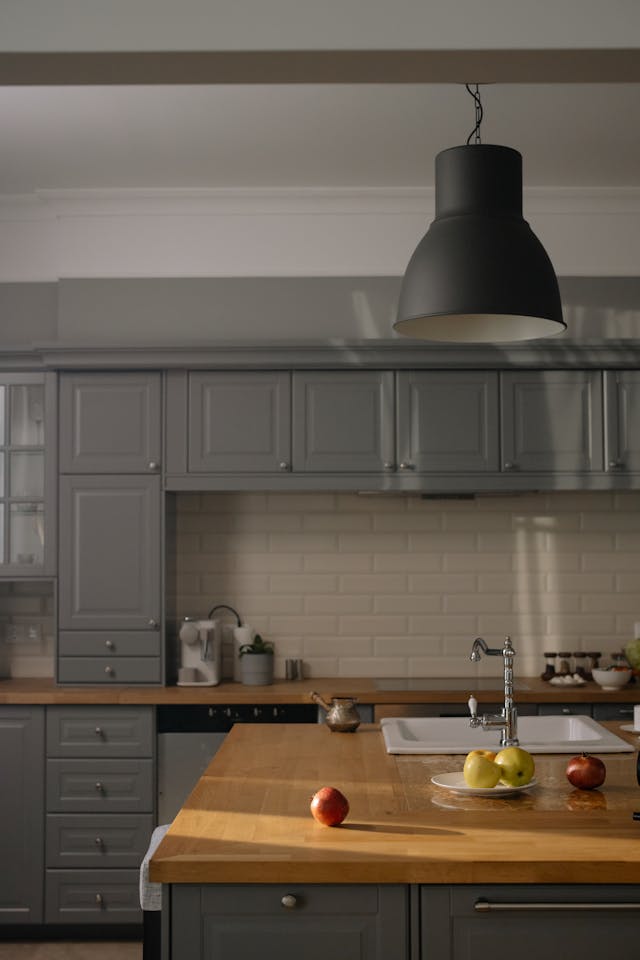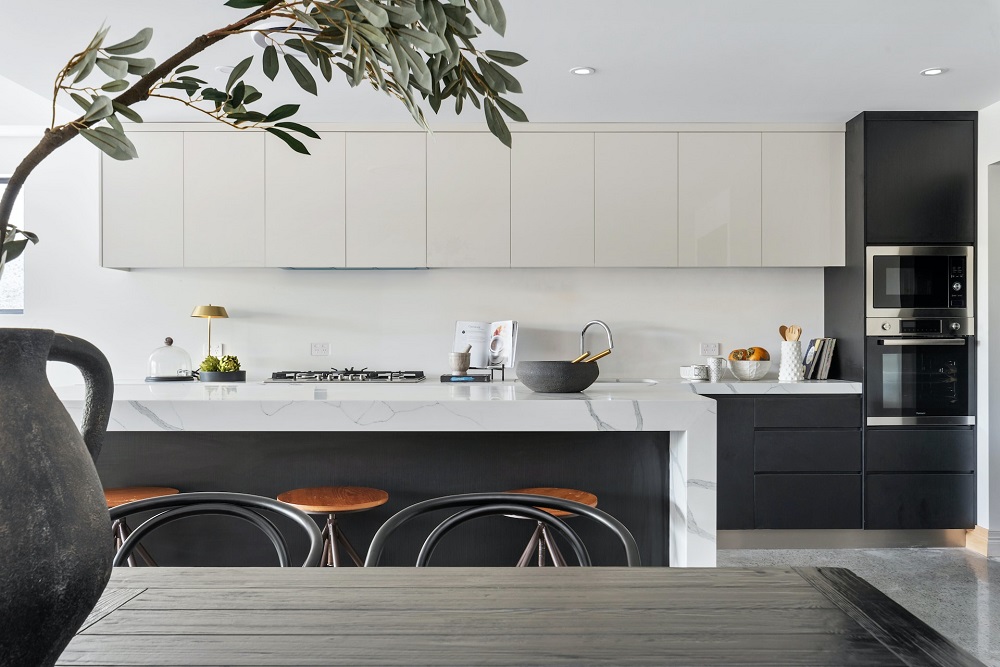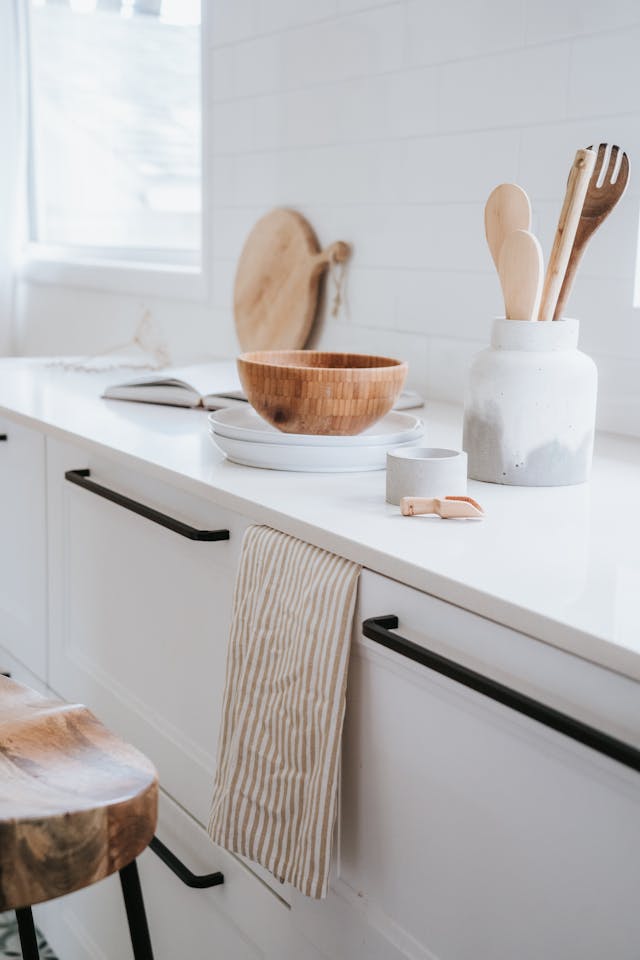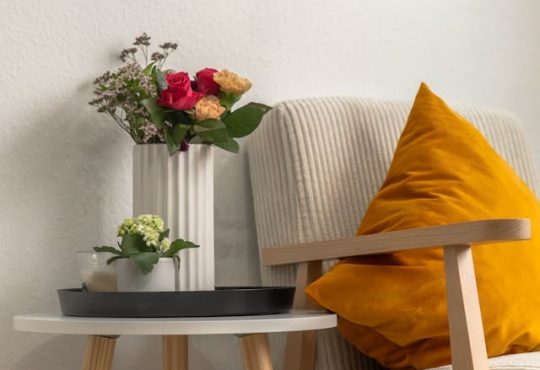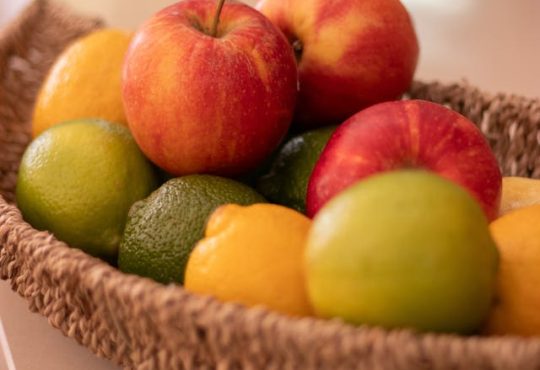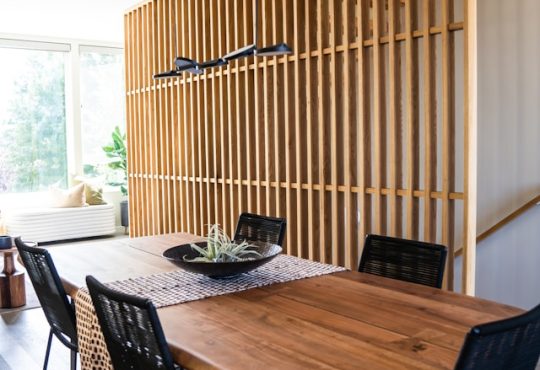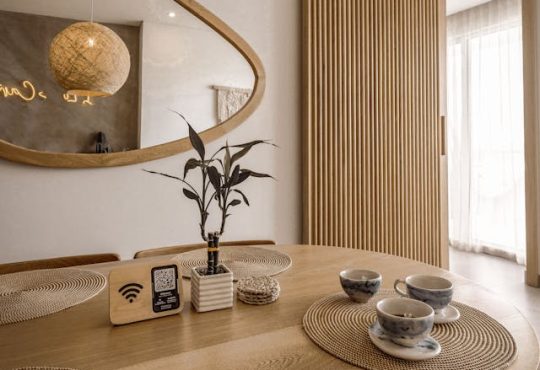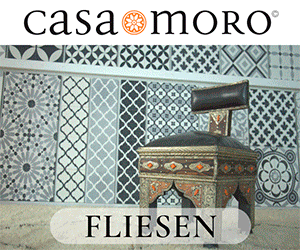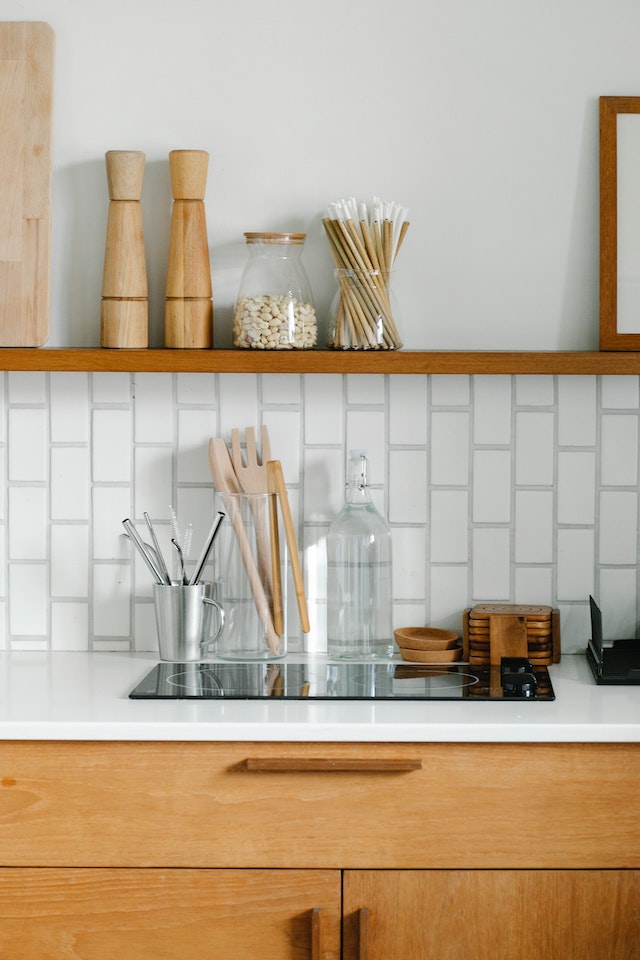
The Ultimate Guide to Kitchen Worktop Materials
Your choice of kitchen worktop material can greatly influence the space’s functionality and aesthetics. The decision isn’t as simple as choosing the most durable or affordable one.
There are a few different factors to consider, especially since each material has its upsides and downsides. In our comprehensive guide, we’ll delve into everything you need to know about kitchen worktop materials. By factoring in their longevity, maintenance, cost, and environmental impact, you can narrow down your picks.
Let’s compare their pros and cons to help you make an informed decision.
Granite
If you’re looking for durability and elegance, look no further than granite kitchen worktops. They’re quarried from natural stone, giving them unique veining patterns you won’t find elsewhere. They’re perfect for homeowners who want to add a touch of luxury to their kitchen to match the traditional and classic aesthetic of your kitchen.
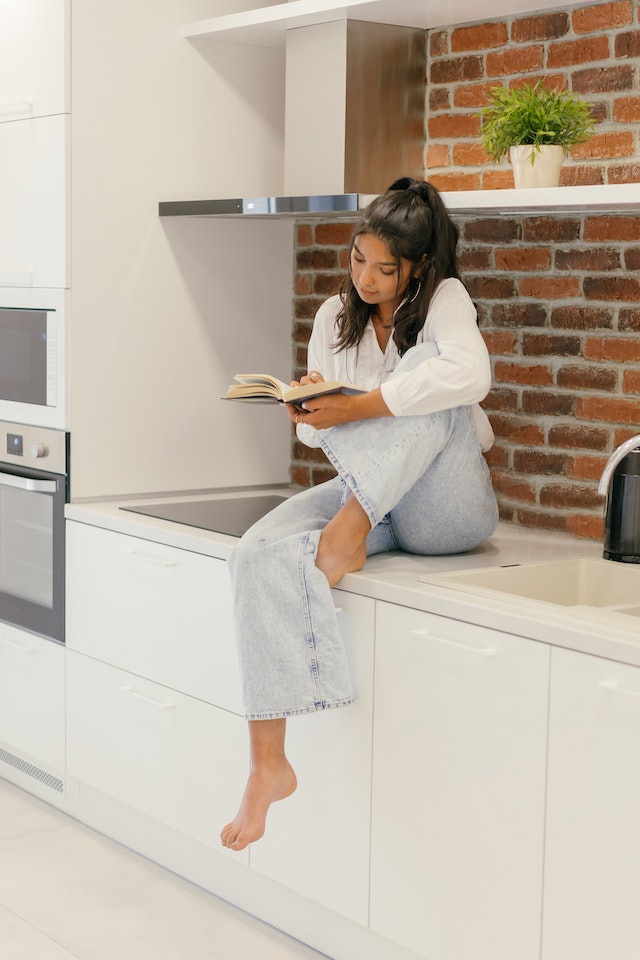
Pros
Durable and scratch-resistant
One-of-a-kind veining and elegant appearance
Heat-resistant; ideal for beside the stovetop
Can increase your home’s value
Cons
Typically expensive
Heavy and requires professional installation
Needs to be sealed periodically
Limited colour choices
Quartz
If you have a contemporary and minimalist theme in your kitchen, a quartz worktop would fit right in. It gives off the perfect modern finish without making too much of a statement. Plus, they’re sleek and easy to clean so that you can fit their maintenance into your busy schedule in no time.
Pros
Scratch-, stain-, and impact-resistant
Non-porous and easy to clean
Doesn’t need to be sealed
Available in various colours and patterns
Prevents bacterial growth
Cons
Not heat-resistant; may require trivets
Typically expensive
Can fade due to UV exposure
Marble
Marble worktops are all things luxurious, elegant, and classy. If that sounds like your kitchen, investing in a marble worktop is truly the best decision you’ll make. You’ll even overlook its price once you see how well it fits with your traditional cabinetry and upscale fixtures.
Pros
Elegant and unique veining patterns
Develops a charming patina over time
Ideal for pastry preparation
Remains naturally cool
Increase your home’s value
Cons
Prone to staining and etching
Needs to be sealed periodically
Soft and susceptible to damage
Typically expensive
Limited color options
Wood
Of course, you can never go wrong with a classic wood worktop; it’s like having a large-scale chopping board! These worktops are perfect for rustic and farmhouse-style kitchens, adding more to their warmth and character. If you have Scandinavian designs and other natural materials in your kitchen, wooden worktops will shine even more.
Pros
Warm and rustic charm
Easy to sand and refinish in case of scratches and dents
Good for the environment
Affordable pick
Cons
Needs to be sealed
Prone to staining and water damage
Prone to scratches
Can be damaged by hot pans or cookware
May require trivets
Can warp or discolor with water damage
Laminate
Most worktop materials are quite pricey, but that’s not the case with laminate. Besides being an affordable pick, a laminate worktop is also perfect for homeowners who prioritise versatility. You can customise it to suit any type of kitchen, even those with eclectic or retro design elements.
Pros
Affordable pick
Available in many colours, patterns, and textures
Easy to clean and low-maintenance
Easy to install
Cons
Prone to scratches and chips
Not heat-resistant
Susceptible to water damage
Difficult to repair once damaged
Stainless Steel
There’s no doubt that stainless steel is one of the most reliable kitchen worktop materials you can find, but it offers so much more. It fits seamlessly into modern kitchens with its sleek and contemporary appearance. But undoubtedly, it looks best in commercial kitchens that need a perfect industrial touch.
Pros
Stain-, corrosion-, and heat-resistant
Prevents bacterial growth
Non-porous and easy to clean
Easy to tailor
Modern and minimalist feel
Cons
Not scratch- and dent-resistant
Can be expensive
Can amplify the sounds of chopping and dishwashing
Shows fingerprints and smudges
Concrete
Is your style industrial when it comes to decorating your kitchen? In that case, a concrete worktop will offer the perfect balance between brutalist and contemporary interior design. Concrete kitchen worktops add the ideal touch of urban sophistication to your culinary sanctuary.
Pros
Can fit any kitchen layout and style
Highly durable
One-of-a-kind appearance
Will last even longer with sealant
Cons
Heavy and requires professional installation
Requires regular sealing
Can be expensive to customise
Naturally porous and prone to water damage
Solid-Surface
Solid-surface materials are all about versatility, often mimicking natural stone and wood at half the price. But these worktops offer so much more besides versatility and affordability. They’re modern, contemporary, and transitional, which means they can fit into nearly every type of kitchen.
Pros
Can integrate sinks and backsplashes
Easy to clean and maintain
Non-porous; prevents water damage
Easy to sand out scratches and dents
Available in many colours and patterns
Cons
Not heat-resistant
Pricier than laminate
Susceptible to scratches
Requires professional installation
Tile
Tiles are definitely an unconventional option when it comes to kitchen worktop materials, but they can pleasantly surprise you. They’re available in so many patterns and materials that it’s hard to find an option that doesn’t suit your kitchen!
More than anything, they suit Mediterranean, bohemian, or traditionally styled kitchens best. Still, you can find the right tiles to add a pop of colour to your modern and minimalistic kitchen.
Pros
Available in many colours, patterns, and materials
Affordable option
Can be DIY-installed
Generally heat-resistant
Cons
Requires regular grout cleaning and sealing
Uneven surface may not be ideal for some tasks
Can chip or crack
Conclusion
The decision of worktop material goes beyond mere aesthetics. Once you consider their durability, cost, and other factors, the choice becomes much more obvious. Use our pros and cons to compare each material and find what suits your needs and preferences best.

